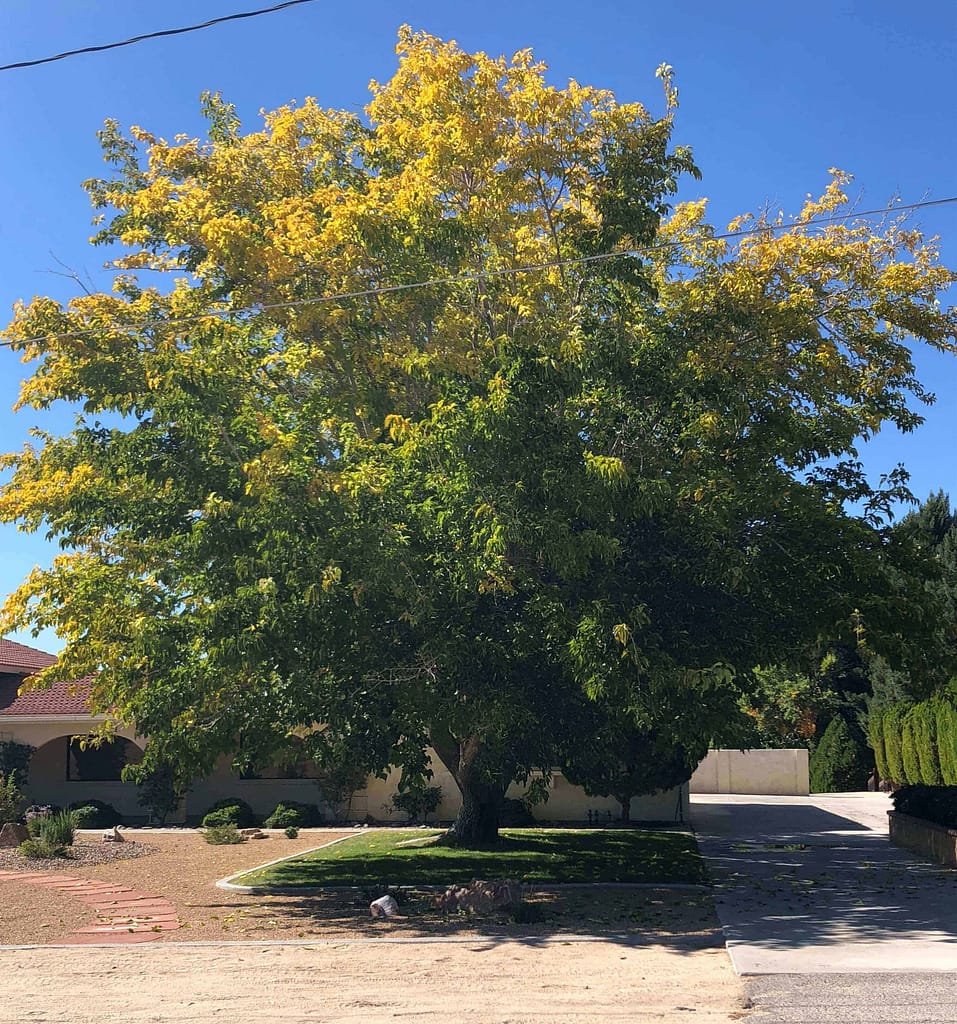
Fruitless Mulberry trees are one of the most frequently planted trees in the high desert. They are also the most widely mistreated trees in the high desert. Understanding how to properly care for your Fruitless Mulberry will help you to get the most out of your tree and minimize the time, effort, and money spent on taking care of them. For a comparison of Fruitless Mulberry trees vs other shade trees head here: https://www.natesnursery.com/shade-trees-high-desert/
Why Plant A Fruitless Mulberry?
- Dense Shade
- Fast Growing
- Tolerant of Heat, Wind, and Drought
- Great Climbing Tree
Complaints About The Fruitless Mulberry?
- Invasive Roots
- Allergies From Pollen
Misinformation About Fruitless Mulberries
Yearly pruning of Fruitless Mulberry trees is believed by many to invigorate the tree, when it is actually very harmful to the tree. Yearly pruning lowers the life expectancy of the tree, weakens limbs, increases susceptibility to diseases and pests, and alters the natural form of the tree. Pruning of mature Fruitless Mulberry trees should only be to remove diseased or dead branches, to raise the lowest branches to a desired height, or to correct crossing branches or branches that would be growing into a structure or power line.
Fruitless Mulberry trees are drought tolerant, but they do need occasional watering even once established. The roots on Fruitless Mulberry trees are very shallow, which causes the root zone to dry out quickly. If not irrigated in some way over an extended period of time, the roots extend further to seek out water elsewhere and can become a problem.
Right Tree, Right Place
Fruitless Mulberry trees can grow up to 60′ in ideal conditions, but more commonly grow up to 35′ in our high desert climate. The canopy can spread up to 45′ wide. Knowing this and the invasiveness of the roots, we can deduce that one should not plant this tree:
- Close to your house (within 25′)
- Near your septic tank
- In proximity to power lines or utility lines
Toxicity
Fruiting and Fruitless Mulberries are non toxic to humans, dogs, cats, and horses.
